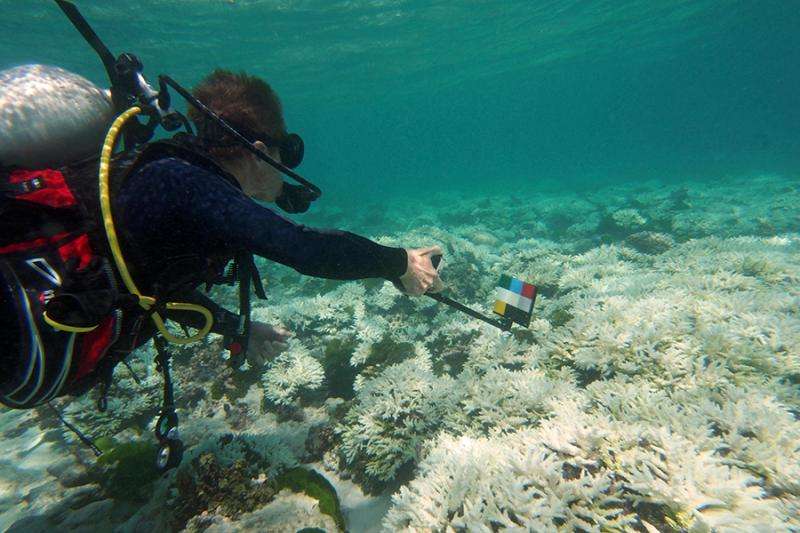Seychelles reefs hit hard, but "pockets of resistance" give hope

Levels of coral bleaching not seen since the 1998 El Niño have been discovered throughout a key Seychelles reef system in the Indian Ocean by a joint research team including UTS marine scientists.
With reefs worldwide experiencing major bleaching in the wake of the 2015-2016 "Godzilla" El Niño, the extent recently observed in an annual survey of the Seychelles' Curieuse Marine National Park was "unexpected" according to the research team from the University of Essex (UoE) in the UK and UTS, working in collaboration with the Seychelles National Park Authority (SNPA).
In work funded by the Mitsubishi Corporation and Earthwatch Institute, the team is seeking to understand the future for Seychelles coral reefs under climate change, collecting samples to unlock the molecular secrets that enable coral species to be more bleaching resistant within "extreme" environments.
UoE marine biologist and expedition leader Professor David Smith says the discovery confirms growing data that Seychelles reefs remain extremely stress sensitive. "We have documented average bleaching levels of 80 per cent, but up to 95 per cent for some sites surveyed," Professor Smith says.
"Many branching coral thickets have already been driven to mortality and the most tolerant boulder corals are starting to drastically pale. Coral cover had only recently recovered to levels reported before the last major El Niño that devastated Seychelles' reefs in 1998."
UTS marine biologist and expedition co-investigator Associate Professor David Suggett says the team has seen bleaching intensities that compare to those being witnessed for the northern Great Barrier Reef.
"This is despite the fact that Seychelles' sea surface warming has not yet been as severe," Associate Professor Suggett says. "This may mean that bleaching goes undetected in many reef systems throughout the region.
"We have been investigating the numerous factors other than elevated temperatures that can amplify bleaching, such as light exposure, but our data currently suggests that we simply do not understand the thermal thresholds of Seychelles corals used to predict bleaching conditions here."
Another expedition researcher Dr Emma Camp, an Endeavour Research Fellow from UTS, has been exploring this system for stress resistant coral populations.
"Whilst bleaching is most intense in the high light surface reef flats, we are importantly seeing 'pockets of resistance' in more sedimented sites as well as in high temperature, low pH mangrove waters where this El Niño-driven bleaching is substantially reduced," Dr Camp says.
Professor Smith says that finding more bleaching resistant coral populations provides important insight towards future management and recovery options for the marine park.
"We won't yet know the full extent of the impact until later in the year when sea surface temperatures fall, but pockets of bleaching resistant coral populations will provide the central seed stock for recovery and require heightened and targeted management," he says.
"We are working hard with SNPA to find the best management action plan for the future, and SNPA's continued eyes on the ground will be crucial over the coming months towards this goal."
Provided by University of Technology, Sydney


















